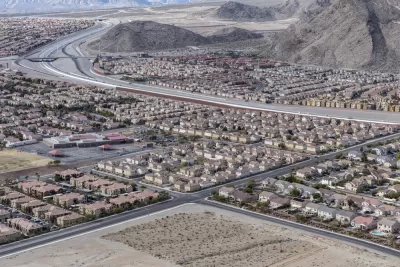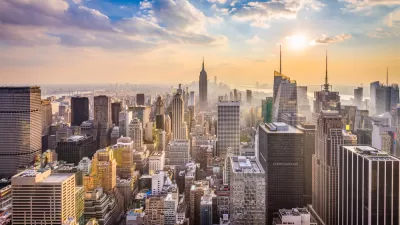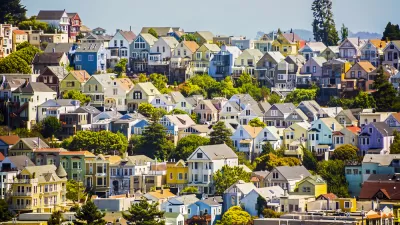In search of space and affordability, American families are increasingly moving to suburbs and exurbs.

Suburban sprawl is nothing new to U.S. cities, but, as we have noted repeatedly over the last two years, the pandemic has accelerated the dispersal of urban households to suburbs and exurbs and reduced Americans' appetite for public transit. But high rents in urban cores have been driving the trend since well before the pandemic. And, as Patrick Sisson writes, "with growth has come a familiar set of challenges, including traffic, environmental damage and city services that struggle to reach a spread-out population."
To meet rising demand for new homes, developers are building on undeveloped suburban fringes rather than urban infill properties with more difficult permitting processes. "Indeed, the ascendance of sprawl is a source of dismay for historic foes of this land- and energy-intensive development pattern, which bakes-in car-centric lifestyles and strains resources like water."
While some cities are enacting zoning reforms and pro-density policies to increase affordability and fight climate change, Sisson says "those factors are not nearly enough to offset the magnetic pull of cheap land." While local leaders embrace walkability and density as goals, many households are still forced to seek affordability outside central cities. Meanwhile, build-to-rent developers are capitalizing on the need from people who can't afford homeownership but want the space and amenities offered by single-family homes.
FULL STORY: How the Pandemic Supercharged Sprawl

Study: Maui’s Plan to Convert Vacation Rentals to Long-Term Housing Could Cause Nearly $1 Billion Economic Loss
The plan would reduce visitor accommodation by 25,% resulting in 1,900 jobs lost.

North Texas Transit Leaders Tout Benefits of TOD for Growing Region
At a summit focused on transit-oriented development, policymakers discussed how North Texas’ expanded light rail system can serve as a tool for economic growth.

Using Old Oil and Gas Wells for Green Energy Storage
Penn State researchers have found that repurposing abandoned oil and gas wells for geothermal-assisted compressed-air energy storage can boost efficiency, reduce environmental risks, and support clean energy and job transitions.

Opinion: DC Encampment Sweeps Hide, but Don’t Solve, Homelessness
President Trump recently ordered the clearing of encampments built by unhoused people on federal land in Washington, D.C.

Santa Barbara Could Build Housing on County Land
County supervisors moved forward a proposal to build workforce housing on two county-owned parcels.

San Mateo Formally Opposes Freeway Project
The city council will send a letter to Caltrans urging the agency to reconsider a plan to expand the 101 through the city of San Mateo.
Urban Design for Planners 1: Software Tools
This six-course series explores essential urban design concepts using open source software and equips planners with the tools they need to participate fully in the urban design process.
Planning for Universal Design
Learn the tools for implementing Universal Design in planning regulations.
Ascent Environmental
Borough of Carlisle
Institute for Housing and Urban Development Studies (IHS)
City of Grandview
Harvard GSD Executive Education
Toledo-Lucas County Plan Commissions
Salt Lake City
NYU Wagner Graduate School of Public Service





























